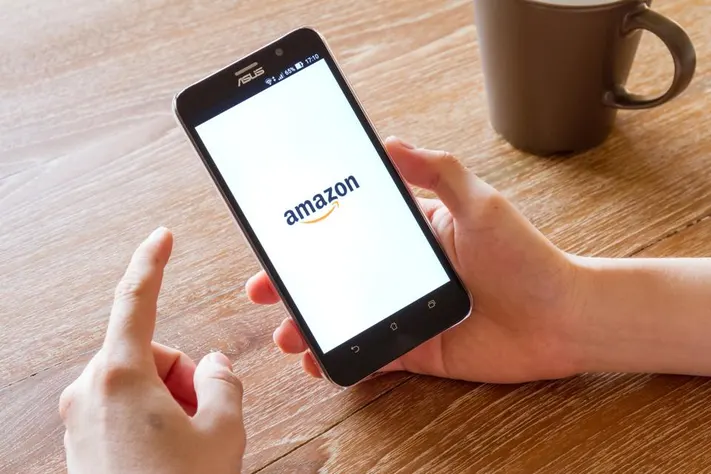One question echoes through small towns and big cities alike: how can local U.S. businesses compete with Amazon? With its vast product range, lightning-fast delivery, and deep discounts, Amazon has changed the way Americans shop. But despite the challenges, many local businesses are not just surviving—they’re thriving.
Let’s explore how these small businesses are carving out a space for themselves in a marketplace dominated by the e-commerce giant.
Understanding the Amazon Effect
Amazon’s impact on the retail industry is massive. From books and gadgets to groceries and furniture, it offers nearly everything at competitive prices, delivered to your doorstep. With tools like Prime membership and same-day delivery, it has raised customer expectations across the board.
For small business owners, this creates pressure on pricing, delivery speed, and overall convenience. But it also opens up new opportunities for local businesses to innovate and build loyal customer bases.
How Local U.S. Businesses Compete with Amazon
Despite the dominance of Amazon, many small businesses are finding ways to stand out. Here’s how they are doing it:
Offering Personalized Customer Service
Local businesses excel at building relationships. While Amazon offers convenience, it can’t match the warmth and personal attention that a neighborhood store provides.
Example: A local bookstore may know a customer’s favorite authors and recommend new releases personally.
Why it matters: Personalized service builds trust, loyalty, and keeps customers coming back.
People don’t just buy products; they buy experiences. And local businesses can offer meaningful, memorable ones.
Focusing on Unique or Handmade Products
One of the best ways to compete with Amazon is to sell what Amazon can’t—unique, local, or handmade goods.
Example: Handcrafted jewelry, organic local honey, or artisan candles often can’t be mass-produced.
Why it matters: These products attract customers who value originality and quality over mass-market options.
Using Buy Local Campaigns
Communities across the U.S. are becoming more aware of the impact of their spending habits. Many are turning to buy local movements to support their local economies.
Benefits:
- More money stays within the community
- Creates jobs and boosts local development
Real-life Result: Cities like Portland, Austin, and Asheville have seen strong community support for local businesses that emphasize ethical, local sourcing.

Leveraging Social Media and Digital Tools
Amazon may have a giant platform, but local businesses are catching up with Instagram shops, Facebook ads, and TikTok promotions.
Tactics:
- Use reels or short videos to showcase products
- Promote behind-the-scenes stories to create brand personality
- Run flash sales and giveaways
People love to buy from brands that feel authentic and approachable. Social media helps small businesses create that personal connection.
Creating In-Store Experiences
While Amazon lives online, brick-and-mortar stores offer in-person experiences that can’t be digitized.
Ideas:
- Hosting workshops or events such as a wine-tasting evening or DIY craft session
- Creating photo-worthy store decor
- Offering product testing or demos
These experiences increase foot traffic, sales, and brand loyalty.
Faster Local Delivery Options
Local businesses are now offering same-day or next-day delivery within their area, a powerful tool to compete with Amazon Prime.
Tools to Use:
- Local courier services
- Buy Online, Pick Up In-Store (BOPIS)
- Mobile ordering apps
This strategy helps businesses stay competitive without needing the vast logistics network Amazon has.
Collaborating with Other Local Businesses
Local business alliances are growing. Collaborating with others in the community creates a network effect.
Examples:
- A coffee shop offering pastries from a local bakery
- A fitness center teaming up with a local wellness store for bundled deals
These partnerships expand reach and strengthen community ties.
Building an Engaging Website
Having a mobile-friendly, fast, and easy-to-navigate website is essential.
Include:
- Product listings
- Online payment options
- Local delivery or pickup info
- Customer reviews
SEO plays a big role. Optimizing product pages with local keywords can help customers find them on Google instead of Amazon.
Emphasizing Sustainability
More and more customers—especially Millennials and Gen Z—are choosing brands that care for the planet.
Tactics:
- Use eco-friendly packaging
- Promote sustainable sourcing
- Offer refill or recycling programs
Amazon may offer convenience, but small businesses can promote conscious consumption as a unique selling point.
Telling Their Story
Storytelling is powerful. Local businesses can stand out by sharing why they started, their values, and who they serve.
Use storytelling in:
- About pages
- Instagram captions
- Customer emails
A strong brand story builds emotional connection—something Amazon simply can’t replicate.
The Power of Local: A Case Study
Scout’s Barbershop in Nashville, Tennessee
Scout’s started as a small, community-based barbershop offering not just haircuts but also beer, music, and conversation. Instead of trying to match chains or online booking platforms, they created a local brand identity focused on inclusivity, style, and experience.
They use social media to promote staff, events, and customer stories
Partner with other small businesses for promotions
Offer mobile services and gift cards online
Despite heavy competition, Scout’s has expanded across Tennessee, all while staying true to its community-driven roots.
Future Outlook: Can Local Still Compete?
The competition will only get tougher as Amazon expands into groceries, healthcare, and even physical stores. But small businesses that stay agile, creative, and connected to their community will continue to thrive.
The formula is not to fight Amazon at its own game—but to play a different game altogether: one built on human touch, uniqueness, trust, and local pride.
Final Thoughts
The question isn’t just how local U.S. businesses compete with Amazon—but how they offer something Amazon never can: real connection, authentic products, and personalized care.
If local businesses continue to adapt, tell their story, and meet modern shoppers where they are (both online and offline), they won’t just survive they’ll win.
Read Next – Green Businesses in the U.S. Are Booming in 2025





